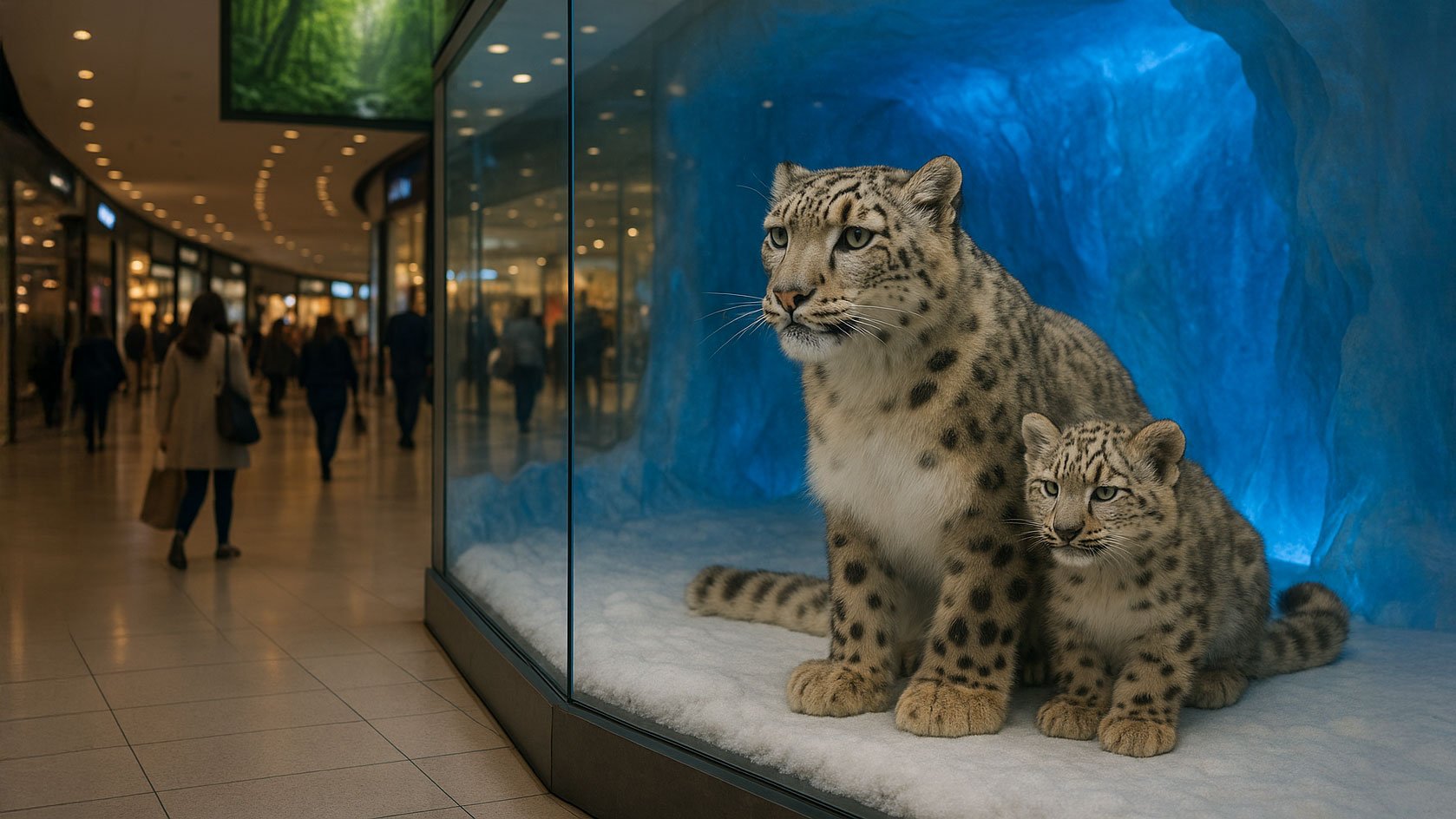Snow Leopard Facts
Snow Leopards
Hear about Snow Leopards:
Common Name: Snow Leopard
Kingdom: Animalia
Phylum: Chordata (Vertebrata)
Class: Mammalia
Order: Carnivora
Family: Felidae
Genus: Pantherinae Uncia
Species: uncia
Misc.: This species, like the clouded leopard, is one of those that is somewhere between the small cats and the great cats in that it can’t purr like the small cats and it can’t roar like the true great cats. It makes a happy sound similar to the tiger's chuffing.
Its greatest threats are the hunting of its main prey species in the mountains, and the poisoning of other of its prey species, leaving the snow leopard with out a means of sustaining itself. There is also a demand now for snow leopard bones in traditional Chinese medicine as a substitute for tiger bones. Unfortunately, there is still a demand for fur coats from snow leopard skins in some countries, but luckily that has greatly diminished. At one time here in the US, a coat from a snow leopard sold for up to $50,000.00.
Sub-Species: A single species - There has been some attempt to recognize different sub-species of snow leopard, but at this time all attempts have been rejected.
Size and Appearance: The snow leopard is unique among the felids for the smokey-gray coloring of its coat patterned with dark gray rosettes and spots, and because of that it became nearly extinct. It’s unique color makes an ideal camouflage in its mountain environment of bare rocks and snow. Further adaptations for high altitude life include an enlarged nasal cavity, shortened limbs, well developed chest muscles, long hair with a dense, wooly undercoat, and a tail over 3 feet long. They use their tails like a coat in the winter, wrapping it around themselves when lying or sitting for added warmth. Snow leopards molt twice a year with the summer coat being not quite as dense as the winter one. Males weigh between 90-115 lbs, with females weighing between 75-90lbs. Their skull is large, short and broad with a short muzzle, resembling the Siberian lynx in its appearance. They have round pupils like the great cats, varying in color from pale yellow to green-grey. Their broad footpads are covered with fur to provide insulation as well as increasing the surface area allowing them to distribute their weight more evenly over the snow.
In captivity, Snow leopards usually die young due to compromised immune systems.
snow leopard map
Habitat: The snow leopard ranges includes alpine meadows, treeless rocky mountains and rhododendron forests. Most of their range occurs in Tibet and other parts of China associated with steep rocky slopes, with arid shrub land, grassland or steppe vegetation. Occasionally, in parts of their habitats they visit open coniferous forests, but generally avoid dense forests. They are found at high elevations of 3000-4500 meters (9800 ft – 14800 ft.), and even higher in the Himalayas.
Distribution: Afghanistan, Bhutan, China, India, Kazakhstan, Kyrgyzstan, Mongolia, Nepal, Pakistan, Russia, Tajikstan, Uzbekistan.
Reproduction and Offspring: The snow leopards reproductive season is from early January to mid March which is the time when vocalizations can most commonly be heard. Litters of 1-5 (most commonly 2-3) will occur following a 98-104 day gestation period. They are born beneath rocks or in rock crevices and their dens are lined with fur. Their spots at birth are completely black, developing into rosettes with age. Their eyes open between 7-10 days, they begin crawling after 10 days, and begin eating solid foods at 2 months. The young will leave their mothers between the ages of 18-22 months, and siblings may stay together for some time following their independence. They will reach sexual maturity between 2-3 years and stay reproductive up until they are 15.
Social System and Communication: Unknown. Some evidence leads to the conclusion that they are solitary except for breeding pairs and mothers with offspring. Territories are marked with scrapes, scats, scent sprays and claw rakings. While it is believed that they have large territories, it is also believed that the territories of multiple animals of both sexes overlap.
Hear our chuffs, hisses, snarls, calls, and growl sounds HERE
Hunting and Diet: Snow leopards are very opportunistic hunters capable of killing prey up to 3 times their own weight. They will also equally take small prey, more so in the summer months when marmots become a main staple in their diets. Their most common prey sources are: wild sheep and goats; pikas; hares; game birds. They kill on the average of 1 large prey item every 10-15 days and stay with the kill for 3-4 days.
Status: Vulnerable. Appendix I CITES. There are believed to be 5000 to 7500 of these great cats left in the wild and 476 in captivity. There are only 28 of these cats paired in approved SSP breeding programs.
Felid TAG recommendation: Snow leopard (Pantherinae Uncia uncia). This species has functioned well with a target population of 200 animals. In addition to having a large founder base, new founders are available from captive sources in Europe and range-country zoos. This species does well in captivity, is managed by a wide variety of owners, and now has a stable population in nature.
Information taken from IUCN Status Survey and Feline Facts (SOS Care)
See Conservation Work Funded By Big Cat Rescue here:
All conservation insitu work: https://bigcatrescue.org/insitu/
Help Save Snow Leopards: https://bigcatrescue.org/save-snow-leopards/
















